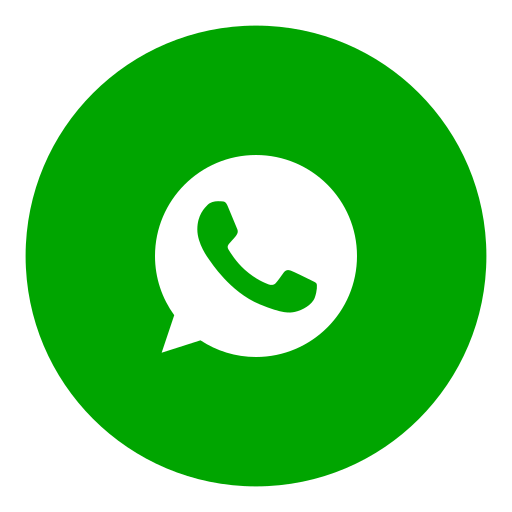PAINLESS ANESTHESIA
Painless Anesthesia
It's so great to see how technology is helping us to achieve things that were once thought impossible! Hair transplantation is a great example of this. Thanks to all the amazing advances in technology, we can now enjoy a much wider range of options than we could have imagined. One of the most significant concerns for individuals contemplating hair transplantation is the potential for discomfort and pain during or following the procedure. As a result, it is common for patients to conduct thorough research on the anaesthesia methods employed in hair transplantation prior to undergoing the procedure. Hair transplantation has a lower complication rate and less pain during and after the operation compared to other surgeries. There are various types of anaesthesia preferred in hair transplantation.Two of the most preferred methods by hair transplantation experts are local anesthesia and sedation. .
Local anesthesia:
Compared to the sedation method, local anesthesia is preferred more by specialists. Local anesthesia is used to anesthetize both the donor area where the hair will be extracted and the transplant area where the hair will be transplanted, in order to minimize patient discomfort during the procedure.During the local anesthesia process, anesthetic solution is injected under the patient's scalp using thin needles. Additionally, a painless anesthesia device can be utilized to further reduce the pain associated with the injections. This device administers the anesthetic solution using a pressure-injection technique, targeting the area to be anesthetized prior to the use of local anesthesia. By doing so, the pain associated with local anesthesia can be reduced by up to 80% . .


Sedation:
The sedation method is an anesthesia method that involves inducing a state of deep relaxation and sleep, achieved through the use of a drug called propofol, which is administered intravenously. In preparation for this method, the patient must abstain from eating or drinking anything for at least 12 hours prior to the procedure.
Differences Between Sedation and Local Anesthesia
Unlike sedation, there is no need to fast before undergoing local anesthesia. You can have breakfast before the procedure and even have
lunch during the break between the operation.
Although the drugs used in sedation and local anesthesia are the same, the sedation method may cause side effects such as nausea,
weakness, or vomiting.
In contrast, with the sedation method, you will not remember or feel anything during the procedure. However, with local anesthesia, you may
experience some initial discomfort lasting about 5 minutes, which can be reduced by 80% using a painless anesthesia technique.
Frequently Asked Questions
The hair grafts are extracted from the backside of the head, which we determine as between two ears and above the neck. The reason for choosing this specific area as a donor (extraction zone) is that the hair grafts in this region are genetically encoded against inherent hair fall. If the extraction process from this region is performed with better quality artistry, hair fall will never occur for a lifetime. Therefore, we take the hair grafts from this region.
The implanted hair may fall out within 2-3 weeks after transplantation. This is a normal process. New hair will begin to grow approximately 3-4 months later, and you can see the final results after 6-12 months. Complete growth can take up to 18 months.
No, the implanted hair generally does not fall out again. Hair extracted from the back of the head is genetically resistant to hair loss and remains permanent. However, existing natural hair may continue to fall out with age, so additional transplantation may be necessary if needed.
The surgery is performed under local anesthesia, so there is almost no pain during the procedure. There may be mild discomfort or swelling after surgery, but this can generally be managed with mild painkillers. Most patients can return to normal activities the day after surgery.
You are welcome to come with your family. There may be an additional charge for companion accommodation, but this is optional. It may vary depending on the accommodation package, so please check the details when making a reservation. Generally, all services are included for one patient.
The operation time varies depending on the number of follicles to be transplanted. Generally, 1000-2000 follicles take 4-6 hours, 2000-3000 follicles take 6-8 hours, and 3000 or more follicles take 8-10 hours. The surgery is completed in one day, including rest time.
Painless Anesthesia
How is a hair transplant performed?It's so great to see how technology is helping us to achieve things that were once thought impossible! Hair transplantation is a great example of this. Thanks to all the amazing advances in technology, we can now enjoy a much wider range of options than we could have imagined. One of the most significant concerns for individuals contemplating hair transplantation is the potential for discomfort and pain during or following the procedure. As a result, it is common for patients to conduct thorough research on the anaesthesia methods employed in hair transplantation prior to undergoing the procedure. Hair transplantation has a lower complication rate and less pain during and after the operation compared to other surgeries. There are various types of anaesthesia preferred in hair transplantation.Two of the most preferred methods by hair transplantation experts are local anesthesia and sedation. .



The sedation method is an anesthesia method that involves inducing a state of deep relaxation and sleep, achieved through the use of a drug called propofol, which is administered intravenously. In preparation for this method, the patient must abstain from eating or drinking anything for at least 12 hours prior to the procedure.
Differences Between Sedation and Local Anesthesia
Unlike sedation, there is no need to fast before undergoing local anesthesia. You can have breakfast before the procedure and even have
lunch during the break between the operation.
Although the drugs used in sedation and local anesthesia are the same, the sedation method may cause side effects such as nausea,
weakness, or vomiting.
In contrast, with the sedation method, you will not remember or feel anything during the procedure. However, with local anesthesia, you may
experience some initial discomfort lasting about 5 minutes, which can be reduced by 80% using a painless anesthesia technique.
- pages.painlessAnesthesia.l1
- pages.painlessAnesthesia.l2
- pages.painlessAnesthesia.l3


Unlike sedation, there is no need to fast before undergoing local anesthesia. You can have breakfast before the procedure and even have
lunch during the break between the operation.
Although the drugs used in sedation and local anesthesia are the same, the sedation method may cause side effects such as nausea,
weakness, or vomiting.
In contrast, with the sedation method, you will not remember or feel anything during the procedure. However, with local anesthesia, you may
experience some initial discomfort lasting about 5 minutes, which can be reduced by 80% using a painless anesthesia technique.
pages.painlessAnesthesia.t6
One of the most significant differences between African American hair and other hair types is the unique structure of Afro-textured hair. Unlike straight or wavy hair, Afro hair is curly both above the skin's surface and beneath it. This characteristic makes the extraction of hair grafts more complex and requires a more meticulous approach.When performing hair transplants on individuals with straight hair, the punch device used for extraction typically has a diameter of 0.9 mm and a length of approximately 4 mm. This straight rotating punch is sufficient for extracting hair follicles in a non-curly pattern. However, this tool is not suitable for Afro-textured hair due to the hair’s natural curl beneath the skin’s surface. The curliness of Afro hair follicles under the skin means that using a standard punch could damage the follicles, leading to a lower success rate and potentially harming the overall outcome of the transplant.To accommodate the curly nature of African American hair, the punch used for extraction must be adjusted. Specialists often employ a punch with a shorter length and a modified diameter that aligns with the curl pattern of the hair follicle. This adaptation allows for the safe extraction of the grafts, ensuring that they remain intact and healthy, which is crucial for the success of the transplant.
pages.painlessAnesthesia.t7
pages.painlessAnesthesia.p7
pages.painlessAnesthesia.t8
pages.painlessAnesthesia.p8
pages.painlessAnesthesia.t9
pages.painlessAnesthesia.p9


 Deutsch
Deutsch
 English
English
 français
français
 italiano
italiano
 Türkçe
Türkçe
 русский
русский
 한국어
한국어


